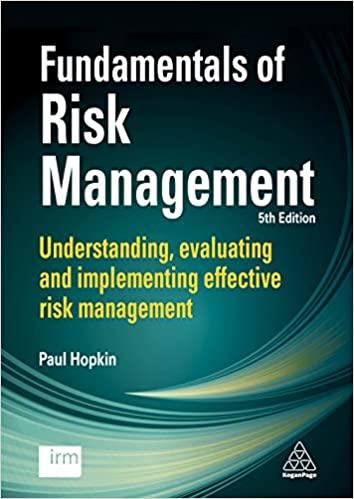Question
PART 1 1 Describe the benefits of induction. (1.1) 2 Outline your employer's procedure for induction. 3 Outline ways in which new members in the
PART 1
1 Describe the benefits of induction. (1.1) 2 Outline your employer's procedure for induction. 3 Outline ways in which new members in the organisation can be supported. 4 Explain how to identify the training needs for individuals in the workplace. 5 Describe training techniques that are appropriate to your workplace. 6 Explain how knowledge of different learning styles can assist when training individuals in the workplace. 7 Describe a method of evaluating the effectiveness of training. 8 Describe how to maintain training records in the workplace. 9 Explain how to identify the coaching needs for individuals in the workplace. 10 Describe a recognised coaching technique a new staff member could use to build their confidence and develop their performance in the workplace. 11a Explain how to plan the coaching for an individual in the workplace. 11b (i) Produce an outline plan for a short coaching session for a task or activity you would find in the workplace: 11b (ii) Coaching session outline plan: 12a Explain the importance of feedback in coaching. 12b Why is constructive feedback particularly important in the coaching relationship? 13 Describe a method of evaluating the effectiveness of coaching in the workplace.
PART 2
1 Briefly describe the legal aspects of the disciplinary process. (1.1) 2 Briefly describe your organisation's employment policies and procedures that could guide the manager when dealing with disciplinary issues. 3 Describe the purpose of disciplinary procedures. 4 Identify the interpersonal behaviour and support skills required by a manager to monitor discipline in the workplace. 5a Describe THREE causes of conflict at work - Cause 1 5b Cause 2: 5c Cause 3 6 Describe the stages in the development of conflict. 7 Explain the effects of conflict on individual and team performance at work. 8 Describe a recognised technique that a manager could use to minimise and resolve conflict in the workplace. 9 Describe how a manager could promote a positive atmosphere in order to minimise the adverse effects of conflict. 10 Explain the causes and impact of stress in an organisation. 11 Describe the symptoms of stress in yourself and others. 12 Describe a practical stress management technique and explain its benefits. 13 Describe management responsibilities and actions in relation to work-related stress in the team. 14 Explain how and when to provide advice, mentoring or counselling to support individuals in the workplace.
PART 3
1 List current legislation and industry regulations relating to health, safety and welfare at work that are relevant to your employer. (1.1) 2 Select one specific item of legislation or regulation and describe your employer's policy in relation to it. 3 Explain the difference between a hazard and a risk. 4 Describe how to conduct a risk analysis. 5 Identify the main areas of your own responsibility for health and safety in the workplace. 6 Describe how to ensure that the team is aware of the health and safety requirements in the workplace. 7 Describe how to monitor health and safety in the workplace.
Step by Step Solution
There are 3 Steps involved in it
Step: 1

Get Instant Access to Expert-Tailored Solutions
See step-by-step solutions with expert insights and AI powered tools for academic success
Step: 2

Step: 3

Ace Your Homework with AI
Get the answers you need in no time with our AI-driven, step-by-step assistance
Get Started


